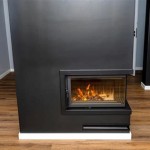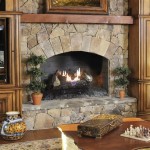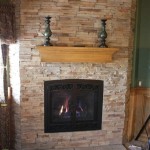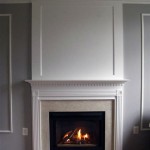Outdoor Gas Fireplace Ideas: Extending Your Living Space Outdoors
An outdoor gas fireplace offers a compelling way to enhance the ambiance and functionality of any outdoor living space. Providing warmth, light, and a focal point for gatherings, a gas fireplace is a versatile addition that can transform a patio, deck, or garden into a welcoming retreat. Unlike wood-burning fireplaces, gas models offer ease of use, clean burning, and consistent heat output, making them a popular choice for homeowners seeking both convenience and style.
The design options for outdoor gas fireplaces are extensive, ranging from pre-fabricated units to custom-built structures that seamlessly integrate with the existing landscape. Considerations for style, fuel source, venting, and local regulations are paramount when planning an outdoor gas fireplace installation. Careful planning ensures a safe, functional, and aesthetically pleasing addition to the home.
Choosing the Right Type of Outdoor Gas Fireplace
Several types of outdoor gas fireplaces cater to diverse design preferences and spatial requirements. Understanding the characteristics of each type is essential for making an informed decision. Broadly, these fireplaces fall into the categories of pre-fabricated units, fire tables, and custom-built structures.
Pre-fabricated Gas Fireplaces: These are self-contained units that offer ease of installation and a wide range of styles. They are often constructed from durable materials like stainless steel, concrete, or stone veneer. Pre-fabricated units can be freestanding or built into an existing structure. They are advantageous for homeowners looking for a quick and relatively affordable way to add a gas fireplace to their outdoor space. However, the customization options are limited compared to custom-built structures.
Gas Fire Tables: Fire tables combine the functionality of a table with the warmth and ambiance of a gas fireplace. They are typically lower to the ground and provide a surface for placing drinks and snacks, making them ideal for social gatherings. Fire tables come in various shapes, sizes, and materials, including wood, stone, and metal. They offer a flexible and portable option for smaller outdoor spaces or for those who prefer a more casual setting.
Custom-Built Gas Fireplaces: Custom-built fireplaces offer the greatest degree of design freedom and allow for seamless integration with the surrounding landscape. These fireplaces are constructed on-site and can be tailored to specific dimensions, materials, and architectural styles. Custom-built options permit the incorporation of unique features, such as seating areas, storage compartments, or decorative elements. This option is best suited for homeowners with specific aesthetic requirements and the budget for a more elaborate project. Professional design and construction services are typically required for custom-built fireplaces.
Selecting the Appropriate Fuel Source and Venting System
The choice of fuel source and venting system significantly impacts the installation and long-term operation of an outdoor gas fireplace. Natural gas and propane are the two primary fuel options, each with its own advantages and disadvantages. Understanding the venting requirements is crucial for ensuring safe and efficient operation.
Natural Gas: Natural gas is often the preferred fuel source for outdoor gas fireplaces when a natural gas line is readily available. It is typically more economical than propane and provides a consistent and reliable fuel supply. However, installing a natural gas line can be expensive if one is not already present on the property. Natural gas fireplaces typically require professional installation to ensure proper connection and safety.
Propane: Propane is a portable fuel source that is stored in tanks, making it a convenient option for locations where a natural gas line is not available. Propane fireplaces offer greater flexibility in terms of placement since they are not tethered to a natural gas line. However, propane tanks need to be refilled periodically, which can add to the ongoing cost of operation. Propane fireplaces require a regulator and connection hose to connect the tank to the fireplace.
Venting Requirements: Venting requirements for outdoor gas fireplaces vary depending on the type of fireplace and local regulations. Some gas fireplaces are designed as vent-free models, meaning they do not require a chimney or vent. However, vent-free fireplaces may not be permitted in all areas and may have limitations on their use. Direct-vent fireplaces utilize a sealed combustion system that draws air from outside and vents exhaust gases directly outdoors through a pipe. This type of venting system is generally considered safer and more efficient than vent-free options. The local building codes and regulations should be consulted to determine the specific venting requirements for a particular location.
Integrating Design Elements for a Cohesive Outdoor Space
An outdoor gas fireplace should complement the overall design of the outdoor living space. Integrating the fireplace with existing landscaping, furniture, and architectural features creates a cohesive and inviting environment. Considerations for materials, color palettes, and spatial arrangements are key to achieving a harmonious design.
Material Selection: The materials used for the fireplace should complement the surrounding structures and landscape. Stone, brick, concrete, and metal are popular choices for outdoor fireplaces. Natural stone can add a rustic and organic feel, while brick can create a more traditional and formal look. Concrete offers a modern and versatile option that can be customized with various finishes and colors. Metal accents can add a contemporary touch and provide durability.
Color Palettes: The color palette of the fireplace should coordinate with the existing colors of the house, landscaping, and outdoor furniture. Neutral colors, such as grays, beiges, and browns, tend to blend well with natural surroundings. Accents of brighter colors can be incorporated to add visual interest and personality. Consider the overall aesthetic of the outdoor space when selecting colors for the fireplace.
Spatial Arrangements: The placement of the fireplace should optimize the flow of traffic and create a comfortable gathering space. Position the fireplace so that it is visible and accessible from different areas of the outdoor space. Consider the prevailing winds when determining the ideal location to minimize smoke and drafts. Arrange seating around the fireplace to encourage conversation and create a cozy atmosphere. Include adequate lighting to illuminate the area and enhance the ambiance.
Furthermore, consider adding features surrounding the fireplace to enhance the experience. Built-in seating can create a comfortable and inviting space for guests. Incorporating storage for firewood or propane tanks can keep the area tidy and organized. Adding decorative elements, such as plants, sculptures, or water features, can personalize the space and create a unique focal point.
Beyond the aesthetic considerations, safety is a paramount concern when installing and using an outdoor gas fireplace. Regular inspections and maintenance are essential for ensuring safe operation. Keep flammable materials away from the fireplace and never leave it unattended while in use. Ensure that the area around the fireplace is well-ventilated to prevent the buildup of carbon monoxide. Following these safety guidelines will help to ensure that the outdoor gas fireplace provides years of enjoyment.
The installation of an outdoor gas fireplace also affects property value. A well-designed and properly installed fireplace can add significant value to a home, making it a worthwhile investment for homeowners looking to enhance their outdoor living space.
The permitting process for outdoor gas fireplaces varies depending on local regulations. Contacting the local building department to determine the specific requirements for a particular location is advisable before beginning the installation process. Permits may be required for gas line installation, electrical work, and structural modifications.
In addition to the practical considerations, think about the ambiance the outdoor gas fireplace will create. The warmth and light of a fireplace can transform an outdoor space into a cozy and inviting retreat, perfect for relaxing with family and friends. Whether it is a quiet evening by the fire or a lively gathering, an outdoor gas fireplace can enhance the enjoyment of the outdoor living space. Consider the types of activities that will be hosted in the space when selecting the size and style of the fireplace.
Consider these additional design elements when planning an outdoor gas fireplace: Windbreaks can help to protect the fire from strong winds, ensuring a consistent and safe flame. Lighting can enhance the ambiance of the space and provide additional visibility. Sound systems can add to the atmosphere and create a more immersive experience.
Finally, remember that an outdoor gas fireplace is an investment in both the home and lifestyle. By carefully considering the options and planning the installation, homeowners can create an outdoor living space that they will enjoy for years to come.

Outdoor Gas Fireplaces Landscaping Network

30 Marvelous Backyard Fireplace Ideas To Beautify Your Outdoor Decor Mimari

Five Fabulous Outdoor Fireplace Ideas Coogans Landscape Design

30 Outdoor Fireplace Ideas Cozy Fireplaces

Outdoor Fireplace Ideas The Home Depot
:max_bytes(150000):strip_icc()/bring-holidays-outside-x-50f80e4865984b36b603a1de82d2938b.jpg?strip=all)
23 Outdoor Fireplace Ideas For A Glowing Retreat

30 Outdoor Fireplace Ideas Cozy Fireplaces

Outdoor Gas Fireplaces Landscaping Network

25 Outdoor Fireplace Ideas Fireplaces Fire Pits

Best Outdoor Gas Fireplaces Direct Learning Center
Related Posts








